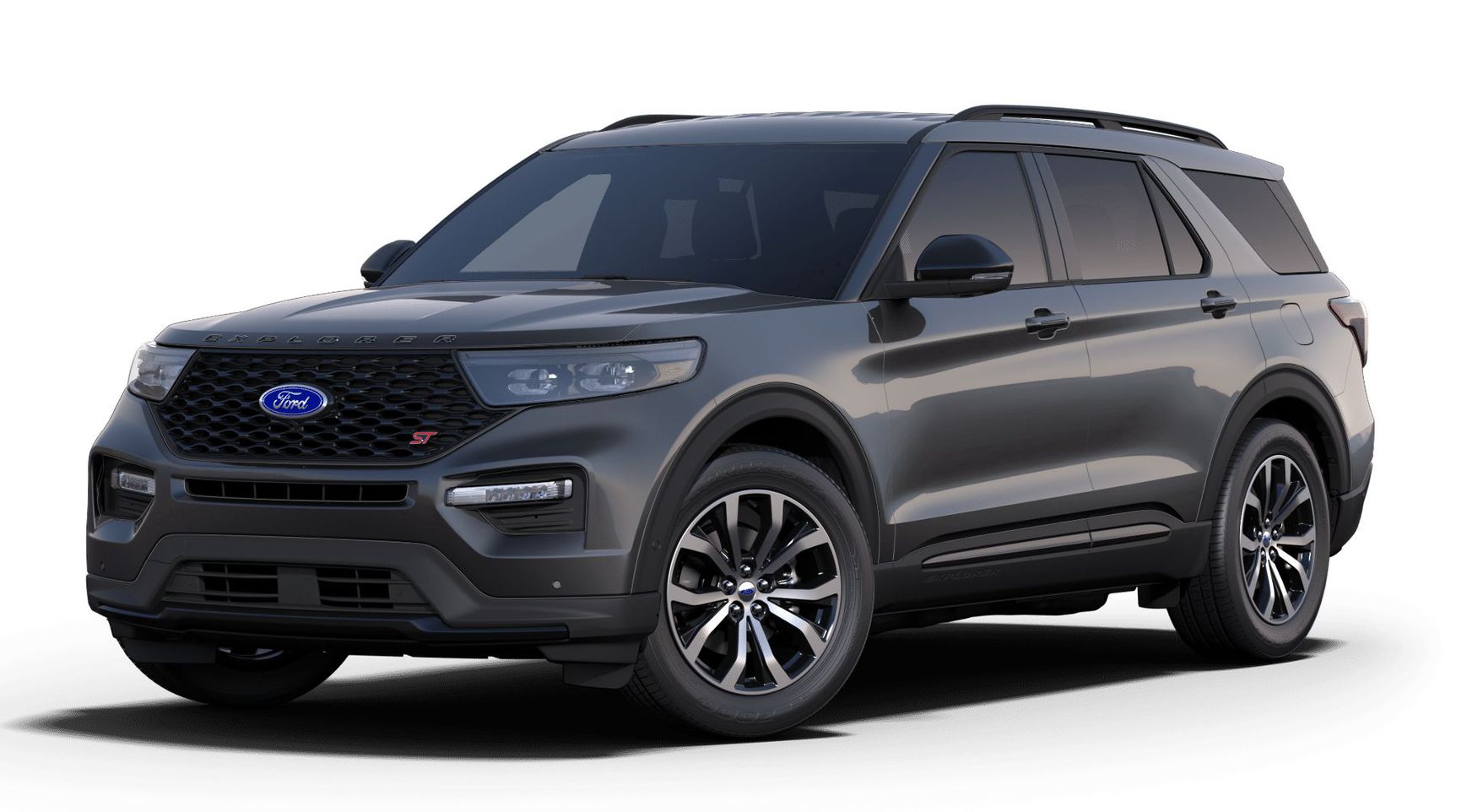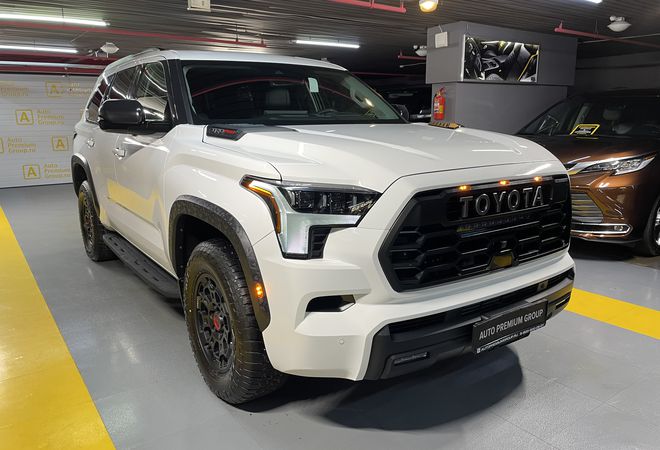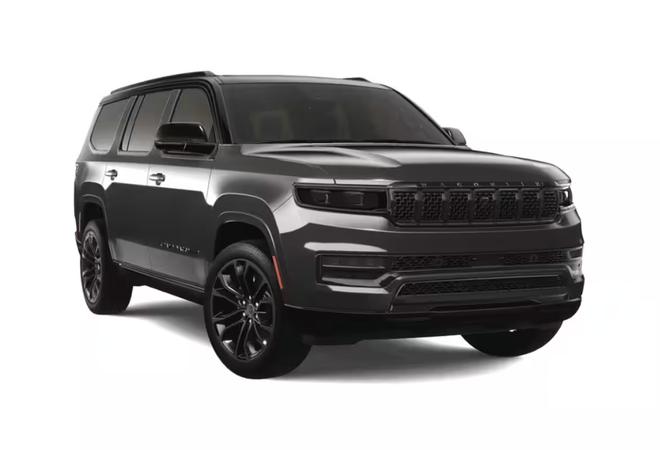2020 Ford Explorer ST First Drive: STaying Power
Enthusiasts are a greedy sort. We like what we like and we’d really rather you keep your dirty mitts off it, thank you very much. So, when the redesigned 2020 Ford Explorer debuted in ST trim at the 2019 Detroit Auto Show, there were, to put it politely, questions.
See, Ford previously reserved the ST treatment for more driver-focused hatchbacks. Crossovers like the Explorer and the two-row Edge were their own bigger, more boring thing and carried the unimaginative Sport badge because of it. So how could Ford build ST crossovers, when the ST ethos – defined solely by the Focus and Fiesta up to this point – demanded not only a significant increase in straight-line speed, but handling, braking, and styling upgrades that the old Sport models could never provide? Based on what we saw in Detroit, it seemed like the Explorer ST was just a more powerful Explorer Sport with a new badge.
Keep Exploring:
After driving the new Explorer ST throughout the Columbia River Gorge, which serves as the border between northern Oregon and southern Washington, that argument still carries weight. Just not as much as it used to. Ford put significant effort into building a proper Explorer ST, and while it falls short in a few crucial areas, this isn’t a cash grab. The Explorer ST may not be the massive jump forward that defined the ST hatchbacks, but it’s got the attitude and spirit of those cars, despite its mission as a family friendly three-row crossover.
Of course, there’s nothing about the Explorer’s mission that says it can’t have 400 horsepower.
Yes, the Explorer ST’s new twin-turbocharged 3.0-liter V6 packs 400 ponies and 415 pound-feet of torque. That’s an increase of 35 hp and 65 lb-ft of torque over the Explorer Sport’s old 3.5-liter EcoBoost engine and is enough to get the ST to 60 miles per hour in a brisk 5.5 seconds. Don’t snort, that’s damned quick for a 4,700-pound American three-row CUV.
Despite its impressive stats, the ST doesn’t feel dramatically quick off the line. Stand on the throttle and the Explorer squats down on its haunches and eases ahead before a wave of torque really gets it moving. The broad, flat-as-Kansas torque curve is the ST’s greatest asset, giving it a point-and-shoot quality that’s easy to exploit as long as the revs are up. And thanks to the standard 10-speed automatic, they pretty much always are.
There’s nothing about the Explorer’s mission that says it can’t have 400 horsepower.
This is, full-stop, the best iteration of the Ford-and-General-Motors-developed 10-speed we’ve tested yet. We got done driving the ST and immediately asked if the Explorer team can share what they know with the folks that tuned the Mustang GT’s 10-speed auto. Quick to engage off the line, able to blend into the background in daily driving, and still quick to respond to sudden throttle inputs (and with none of the Mustang’s hunting or uncertainty), the 10-speed is at its best with the Explorer in Sport mode and when the driver starts working the wheel-mounted paddle shifters.
The upshifts feel (and this isn’t an exaggeration) faster and sharper than the Mustang GT with the automatic transmission. According to Ford, an Explorer ST can complete a two-three upshift in Sport and Manual mode in just 0.29 seconds, or roughly a third of the time it takes to make the same change in Normal mode with the transmission shifting of its own accord. To repeat, that’s damned quick for a 4,700-pound three-row CUV.
But there is a fly in this performance ointment, and it’s the Explorer’s own nannies. No matter how aggressive the drive mode or how DIY the transmission is, the Explorer will always change gears for you if the revs climb too high or drop too low. That’s no big deal, as even some dedicated performance cars do it (and this is a three-row CUV, after all), but the Explorer consistently upshifts at 6,000 rpm, 500 revs below its indicated redline.
The Explorer changing up independently isn’t a huge deal, but it happens in all situations; whether you’re gently accelerating toward 6,000 rpm or charging there at wide-open throttle. The 10-speed always leaves a little something on the table, and that’s not a trait we want in an ST.
We do want ST-specific bits, though, and the most powerful Explorer trim has those in spades, starting with its dedicated Sport mode. While other Explorers get a Sport setting, the ST’s – like so much of its hardware – is unique. Along with unlocking faster gear changes, the transmission is far more willing to hold a gear (as long as you’re south of 6,000 rpm), while engine braking is more aggressive during downshifts. And of course, there are the usual Sport mode tweaks: sharper throttle response, weightier steering, and less restrictive stability control.
The 10-speed always leaves a little something on the table, and that’s not a trait we want in an ST.
But electronics can’t defeat the laws of physics. Put simply, the Explorer ST is a porker. But the 4,700-pounds mass is only a problem because the uprated suspension allows it to be. There are plenty of weighty performance crossovers, but the Explorer’s heft stands out because the suspension isn’t firm enough to mitigate it. Engineers made the springs ten-percent stiffer in front and nine-percent firmer in back, while the base model’s standard 33-millimeter front and 20-mm rear sway bars grow two mm in diameter. Michelin Latitude Sport 3 summer tires (a late-availability extra) are worth the hassle of seasonal swapping, but increasing overall grip can’t hide the Explorer’s weight.
Even in ST trim, the Explorer rolls freely from side to side around bends. The roll is progressive (it takes some dimwitted steering inputs for the Explorer to feel really sloppy), but understeer is easy to provoke, even with the stickier Michelin rubber. At the same time, the fixed dampers could be stiffer so as to better stifle the abundant vertical motion. Feedback is absent both through the chassis and the electric power-assisted steering (the EPAS system does have a pleasant weight that builds predictably from on center), but we could level the same charge at most of the Explorer’s competitors.
Still, along a twisting mountain road on the Washington side of the Columbia River, a funny thing happened: we were having fun. Hustling the Explorer ST along is enjoyable, even if the gap between it and the standard model is far narrower than the gulf between a Focus and Focus ST. The Explorer’s new rear-drive-based platform feels engaging and more willing, and even though the ST comes standard with all-wheel drive, the system is rear-biased. It’s constantly varying power between the front and rear axles, and only sends a maximum of 50 percent to the front axles when conditions call for it.
The bigger issue, based on our drive, are the optional performance brakes. Identifiable by the red calipers and featuring larger rotors and unique pads, the stoppers are available as part of both the $995 ST Street package and the $1,595 High Performance package. While they’re the one piece of hardware that has no qualms with the Explorer’s weight, the brake pedal is difficult to work in certain settings. Around town and in relaxed conditions, the brakes are easy to modulate. But at higher speeds and when pushing harder, the left pedal bites more aggressively. Multiple times, we called in more stopping power than we really needed, a jarring experience on a twisting, unfamiliar bit of road. You’re better off sticking with the standard brakes, which the ST shares with the Explorer Platinum.
A funny thing happened while we were driving the Explorer ST: we were having fun.
Ford’s ST cars typically adopt distinctive visual elements, and the Explorer ST just replaces all the standard crossover’s chrome with black trim, much like the Explorer Sport that came before it. That means gloss black mirror caps, a blacked-out mesh-like grille, black wheels, black window surrounds, black “EXPLORER” lettering on the hood, and a gloss-black strip above the license plate. It’s, um… fine? The ST is certainly the best-looking version of the new Explorer, but aside from the black accents, the two ST badges, and minor fascia tweaks, it looks like any other version of the redesigned crossover.
The same is largely true of the cabin. There’s an ST-specific flat-bottom steering wheel and some unique bits of trim, but otherwise the cabin is identical to the standard Explorer’s, which includes the same paddle shifters, dial-operated gear shifter, and uninspiring leather seats. The Focus and Fiesta ST looked special and unique just sitting still, but that’s never the case with the Explorer ST.
Ultimately, our main problem – and what separates the Explorer ST from other ST models – is just how pricey it is. ST has represented affordable performance in the past, with the Fiesta ST adding just $5,500 to the price of the base Fiesta hatchback. Meanwhile non-ST Focus hatchbacks often cost more than the $25,170 Focus ST. Hell, there was only a $700 difference between that car and the Focus Titanium.
The Explorer ST, though, starts at $54,740; an $18,065 increase over the $36,675 XLT. Even as a matter of percentage of total price, that’s a significant premium compared to prior ST models. Comparing the new model to the old Explorer Sport doesn’t help matters. The $46,625 starting price of the Sport represented a $8,115 difference of just over its 2019 XLT counterpart. And while Ford says that most of the Explorer Sports it sold carried a pricey package that’s now standard on the more-powerful Explorer ST, that’s still a big year-over-year jump in price.
But while that big increase in price is hard to ignore, it doesn’t feel egregious considering how big an improvement the Explorer ST is. Yes, Ford could go further – an Explorer RS sounds like a hilarious idea, unlikely as it may be. But while we wait for what probably will never happen, we’ll have to be satisfied. The Explorer ST may lack some of the key qualities that made the ST badge so desirable among enthusiasts, but it’s got the right spirit.
Ford Explorer ST
Сейчас данный автомобиль доступен только под заказ!
Также, возможно, вас заинтересуют другие автомобили в наличии:
Спеццена
В резерве
В резерве
20th Anniversary
В резерве
2020 Ford Explorer ST



Неплохой заряженный кроссовер. Но не могу я привыкнуть к американцам с такими моторами. V8 не хватает. Я понимаю и в курсе, что он вообще во все времена был на топовых версиях. А так, а американцы и четырехцилиндровые моторы юзали. Но здесь на странице как бы топ-версия.
Наконец-то Эксплорер выглядит действительно круто, а не «я тоже джип». Но движок. увы. Да, концерн Ford постепенно отказывается от V8, даже Линкольны поголовно переведя на мощные Экобусты, а большие моторы остались только у Мустанга да 150. Странное решение, если взглянуть на конкурентов: Chrysler по-прежнему пихает Hemi во все щели, а GM и вовсе новые «восьмёрки» разрабатывает. А Форд, видимо, топит за экологию — хотя как планету спасёт замена 5-литрового мотора на 3-литровый схожей мощности, не очень ясно. Как бы то ни было, фанатам больших движков остаётся только плакать и ностальгировать: если на Рапторе и даже на GT турбомоторы смотрятся нормально (там главное эффективность, а не понты и традиции), то Эксплорер обязан быть с V8.
А Форд, видимо, топит за экологию — хотя как планету спасёт замена 5-литрового мотора на 3-литровый схожей мощности, не очень ясно — не очень ясно? Возьмем, к примеру, старый 5-литровый движок на 250 сил, и новый 2-литровый на те же 250 сил. У одного расход будет 15-20 литров, у другого 7-8. Новые двигатели отжаты для повышения КПД и минимизации выбросов, однако обратная сторона — они одноразовые. Зато старые жрут тоннами бензин (а иногда и дрова, лол), практически вечные, но экономически невыгодные. И экологически.













